How to make your own LEGO set
Posted by Huw,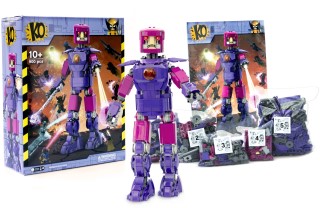
This article has been written by Kyle, owner and operator of KO Custom Minifigs:
We recently took on a project to make what we have called our Mutant Hunter Mech building set. We are known for making custom LEGO minifigures, but this is the first time that we have ever made a professional quality, custom building set.
The process was a lot of fun and I’d like to explain how I did it and what I’ve learned along the way.
It all starts with an idea - Once you have an idea for a LEGO set that you’d like to design, gather images of your subject matter from all different angles. If the subject is something that appears differently across various forms of media, decide if you will be making one exact look, or if yours will be a mash-up of different iterations.
I am not an engineer, but I have been building with LEGO all of my life. Having said that, the LEGO models that come out nowadays are some of the most structurally sound models they have ever made. Long gone are the days of building a Star Wars ship that collapses in half while playing with it.
For this reason, I decided to look at recent LEGO Mech Robots when I began the initial phases of designing the MHM. Examining similar builds by LEGO’s Master Builders is a great way to ensure that you have a good understanding of the mechanics required to build your model.This is not to say that you should copy existing designs - your model should still be your own work.
Examining LEGO sets that have a similar form to your future model will show you where to balance the weight or connection points. You can do this by looking at the instruction manual of a model via a free online PDF. Once you have looked at a lot of these, consider buying the set that is the most useful to your needs and build it so you can see how the model is stabilised in person.
It is also a good idea to have a sense of scale in mind for how large or small to make your model. You wouldn’t want to jump into things and realise it is not set to minifigure scale or that it is way too large. Planning this now will save you time later. For the MHM, I wanted the build to be fairly large, and have it be a very large size compared to a standard LEGO Minifigure. I decided to go with it being just about 12 inches tall, which allowed me to plan out how long each arm and leg should be.
Knowing this, I could then expect about how long each sub part of the leg should be. This is important because it determines how many parts can fit within the space and how you have to arrange them for stability and details.
If you’re building something that relies on very specific colours, you should familiarise yourself with what parts are available in those colours. You can look into this on the colour tab on Bricklink.com, or here on Brickset.com, as well as on the software Bricklink Studio. For MHM, the biggest challenge of the entire process, from designing and building, to sourcing parts, etc., was that a large amount of the parts used were magenta and dark purple. These colours aren’t available for many elements, so it greatly limited the selection of parts to build with.
What features do you want your model to have? Before I started designing MHM, I knew that I wanted to have a way for the eyes to light up, and I wanted to make it as poseable as I possibly could, like a giant action figure. Ideally, I wanted to have the translucent orange dish piece on the chest of the MHM light up as well, but it wasn’t able to be done. However, my core features of light-up eyes and poseability were successful.
During the building process I realised I could include an additional feature, a connection point within the MHM’s hands that could be used to attach accessories. That’s when I decided to include the “tentacle” coil attachment as part of the set, but the connection point could be used for other interesting attachments like a brick built energy beam attack, or as a way to attach a minifigure. You might encounter similar opportunities along your building process that allow you to add cool, unexpected features.
I would highly recommend using the software Bricklink Studio to build your own model. There are other digital building programs out there, but this is, in my opinion, the best choice. Bricklink Studio allows you to export an inventory list of the parts used in your build so that you can upload this list to your Bricklink account. Then you can buy these parts from Bricklink.com using this list.
If you are not familiar with Bricklink Studio or you haven’t used it much, you may want to watch some YouTube tutorials for it. There are so many great features included in this program.
Using Bricklink Studio, begin by building something that looks accurate to your reference images. Do this one step at a time. For me I started by building the feet, and then the legs of the MHM. I treated each as a dedicated model within a model, sculpting them to look as accurate as I could get them. LEGO is known for its small details so try to employ that philosophy into your design. You don’t want to rush through the building process.
Keep structural strength in mind as you build on screen. Eventually you will need to test this design with real parts to ensure stability. Digital building allows you to explore ideas, and experiment while saving time and money. Alternatively, if you tried to physically build out every option it would take significantly longer and would be far more expensive. Along the way, you will most likely end up going back and modifying designs that you thought you had finished.
I found that while designing MHM, I would be fairly happy with how something looked, but after reevaluating the entire model, I would go back and change something. It’s a fluid process, but it's important to be open to making these kinds of changes along the way. You don’t want to lock yourself into any designs until you feel the entire model looks as it should.
Try to condense your model where you can. An obvious example of this would be, instead of stacking three plates on top of each other, see if you can use a brick. Most cases this will work, unless the brick in question does not exist in the colour you need but plates do.
Bricklink Studio has a very well-made instruction generator, although it has a bit of a learning curve to it. I had never used the software to make instructions until now. The main difference is that you need to mark new steps as you are building. The way that I made MHM was that I designed the entire model first, and once it was finished, I physically built the model with real parts. I then began the process of partially deconstructing small sections at a time.
From these physically deconstructed sections, I would rebuild these areas by hand, as well as, simultaneously building them in Bricklink Studio. In Bricklink Studio, I would generate a new step after adding about 5-6 parts into the onscreen build. Making instructions can feel very tedious, but you wouldn’t want all of your hard work to be lost now by making confusing steps that the builder cannot follow.
Take this on one area at a time and in several sessions. Once you’ve got your steps seemingly making sense, print them out and have a family member or a friend attempt to build your model. Note any area that confuses them or isn’t clear. You may need to modify the angle showing the building step or change the order of the parts being added.
You can use Bricklink Studio’s instruction maker to not only organise your building steps but also design the final look of your pages. I’m not extremely familiar with this side of their editor but there are several videos online that go over the settings to change the look and layout of the page. I went a different route for my MHM set. Depending on your level of experience with graphic design I would caution you to stick with Bricklink Studio’s instruction maker.
I wanted to make a printed instruction booklet, so I was only using Bricklink Studio’s instruction maker to generate the images I would need of each building step. Once I had the high resolution PNG images exported from Bricklink Studio, I then used Adobe Illustrator to design my actual pages.
I was using a specifically sized template which included bleeds and safe areas. I downloaded the template from the printing company I was ordering from. If you go the route of making your own printed booklets, it is expensive and time-consuming. Be sure that the images you’re using are high resolution, and that the scale of parts is consistent throughout the booklet.
I had a percentage calculated out that I would scale each image down to. Don’t overload a single page with too many steps. Test that your pages are readable by printing out a page at home, at actual size. If you only require digital building instructions, you can export the instructions you’ve made in Bricklink Studio as a PDF file. Some custom models offer their instructions as a digital download or come on a USB drive.
You will want to have high quality images of your model to show the world. I would recommend taking high resolution photos of your finished model, against a plain white background, or you could make a high resolution, digitally rendered image of your model using the render feature within Bricklink Studio. For either approach, a static pose of your model is a good start, followed by other images that showcase its special features.
If you would like to go even further, and have a box printed for your custom set, I would caution you in a similar way about the costs and level of graphic design experience before taking it on. However, for MHM I found a box printing company online, and worked within a dieline template they provided. The dieline template corresponded to the specific box shape and dimensions I was ordering.
To figure out what box size I needed, I measured and trimmed a cardboard shipping box at home. The dimensions factored in that the box had to contain the printed instruction booklet, and the parts for the set (which were separated into 5 bags for each stage of the build). I ensured this was accurate by physically testing that all components would fit. In terms of production, I also had samples of the box and the instructions printed up. This was to ensure that the colour levels were where I wanted them.
Printing in CMYK often makes your artwork appear darker, or more blue. If you are designing your own box/ instructions, check that your document’s colour profile is set correctly to RGB (screen) or CMYK (print). Also, check for any other specific directions that the company you are using has for formatting your files or other settings. This can often be found on the company’s FAQ section or by asking the company.
If you want to offer the full set, parts included in the box and ready to build, you will need to source every part. I mainly have used Bricklink to source the parts needed for each set. I have also used LEGO’s Bricks and Pieces service, but the availability of parts is often hit or miss.
The thing that I would stress the most is, if you plan to provide the parts, before you finalise your model, begin printing X amount of copies of instructions, boxes, etc., double check that all of the parts you are using are readily available to fulfil all of your sets. Certain parts might appear to be available to buy, but upon looking further only a handful of sellers might have them. This is more often the case for parts that have only ever appeared in one set, at low quantities in that set.
Again, this was more of a factor for MHM, due to the unusual color palette I was working in for magenta and dark purple elements. Once you have your set finalized, and are not using any elements that you cannot buy, you can proceed with the rest of the process. To order all of the parts I made multiple wanted lists on Bricklink. One list is the master list of the original build, and other lists were bulk ordering lists that had the quantity of each part multiplied by 10. Using Bricklink’s smart buy feature, and wanted list buying features, you can order parts and apply the order to your list to track your inventory quantities and see what is still needed.
Finally, once you have the parts for your set you will need to sort them all out. I did this by sorting the parts into a few of the Akro-Mills sorting drawer bins. Each bin is labelled with what it contains. They are a great way to keep things neat and organised. To sort each bag, I have a list of the parts and quantity required, and I scan through the rows and columns of the Akro-Mills sorting drawers, gathering what is needed.
Once I have all the parts, I double-check the lot of gathered pieces and carefully slide the tray of parts into a plastic bag, which is then sealed with a heat sealer, and numbered with a sticker. Once the parts are bagged, they are then packed into one of our custom boxes, along with a printed instruction booklet, (which has been sealed in plastic wrap) and the set is ready to be sent out.
One thing's for sure: creating your own LEGO set is a lot of work, but a labour of love!
If you'd like to purchase your own Mutant Hunter Mech, you do so at KO Custom Minifigs for $225.
99 likes
.jpg)
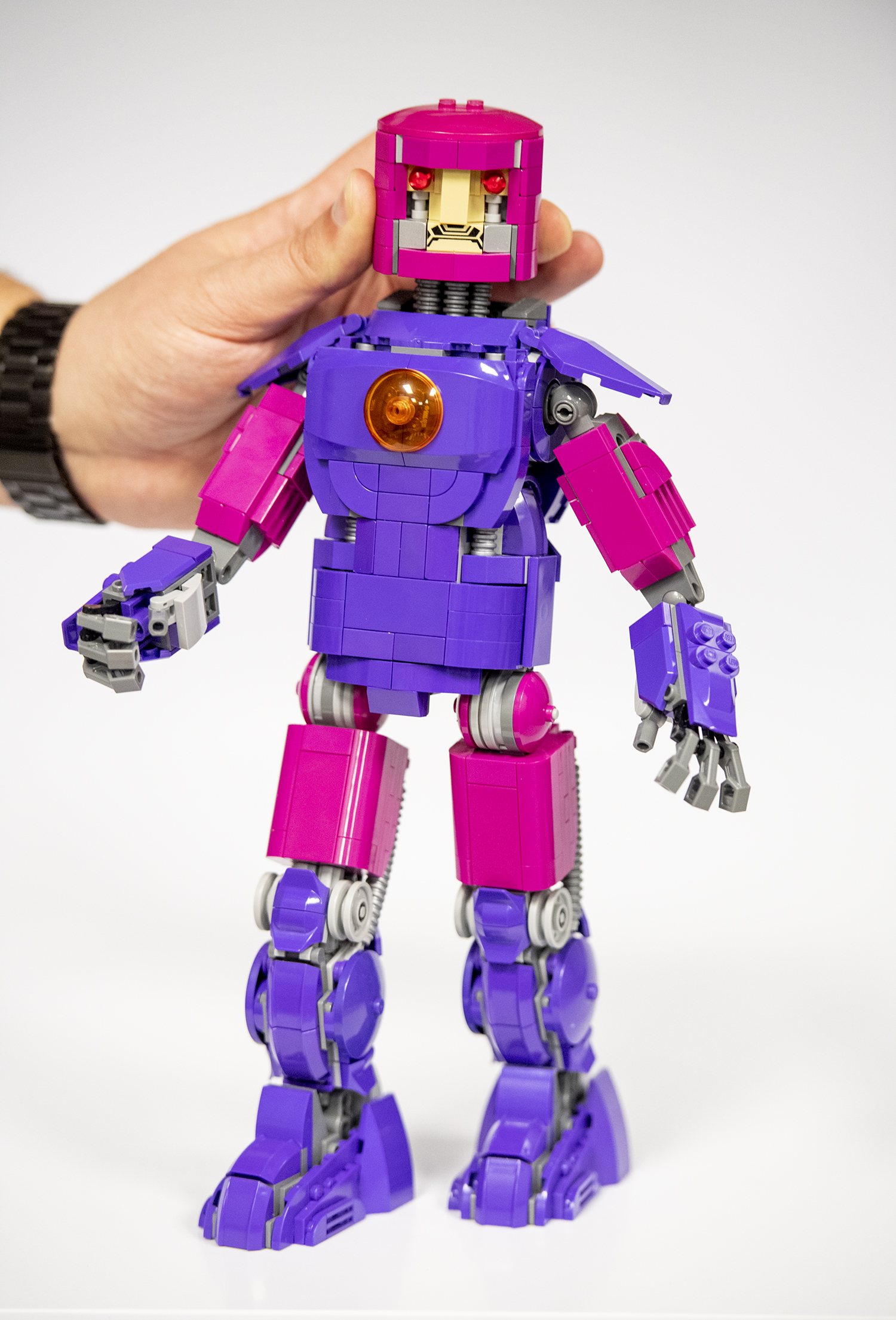
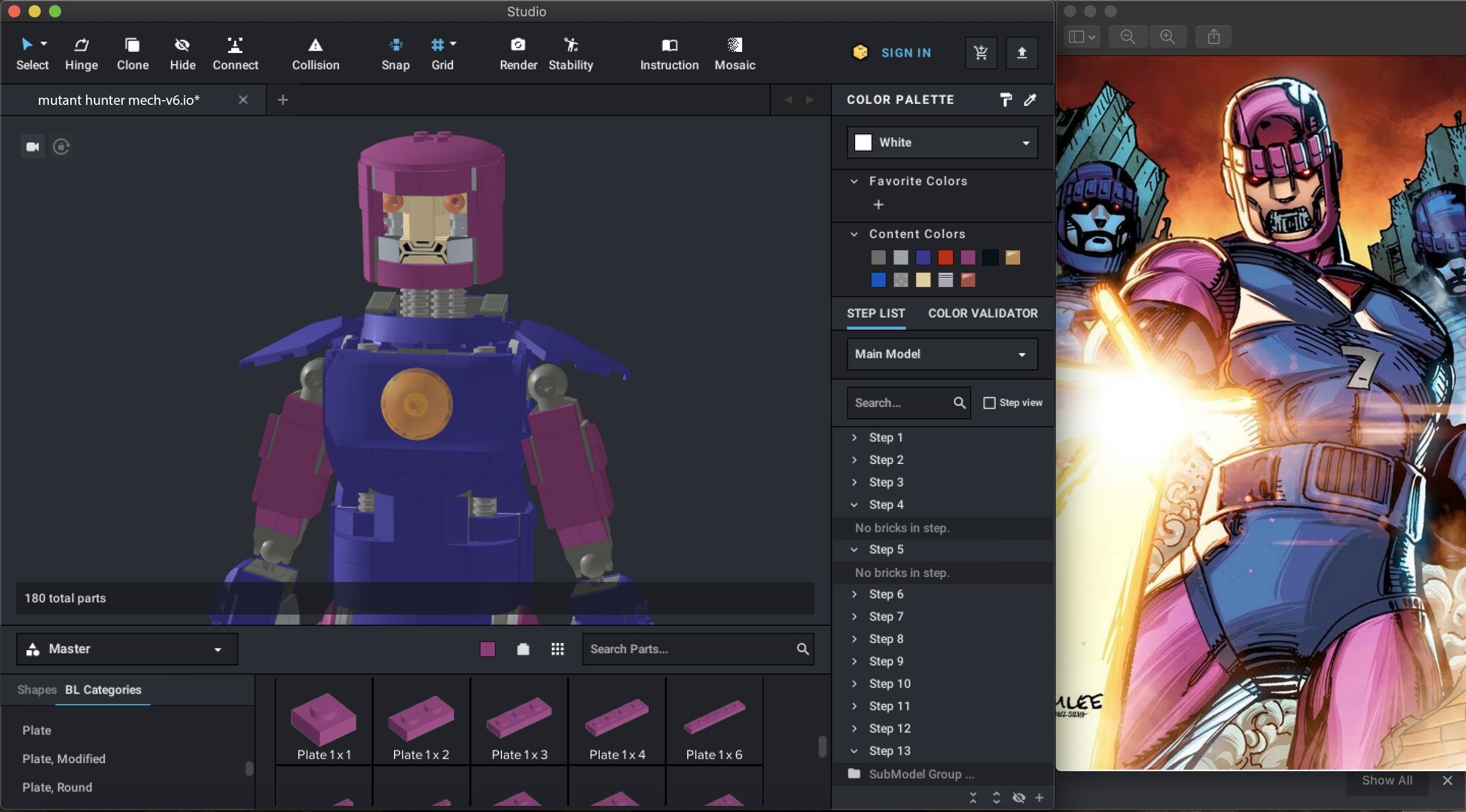
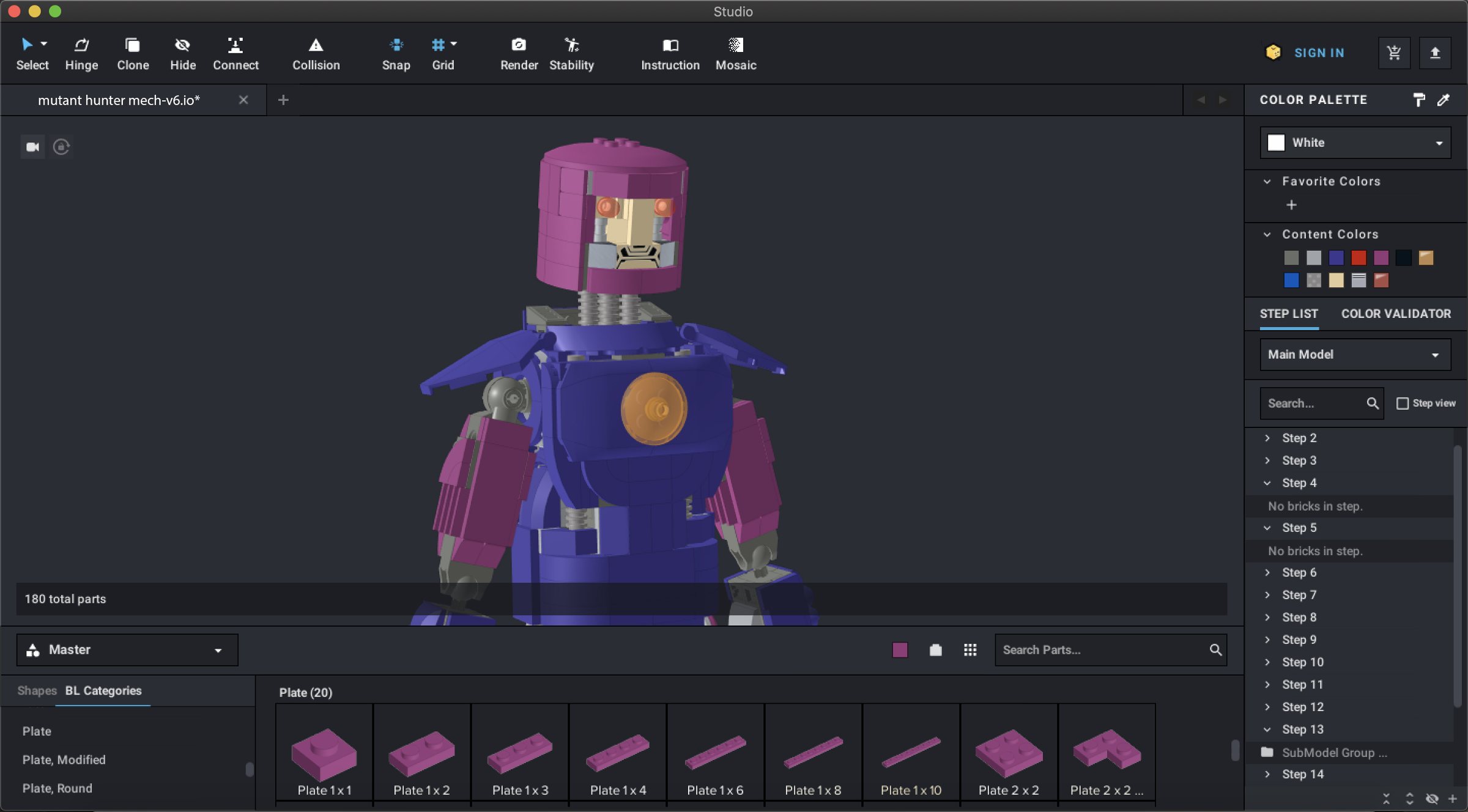
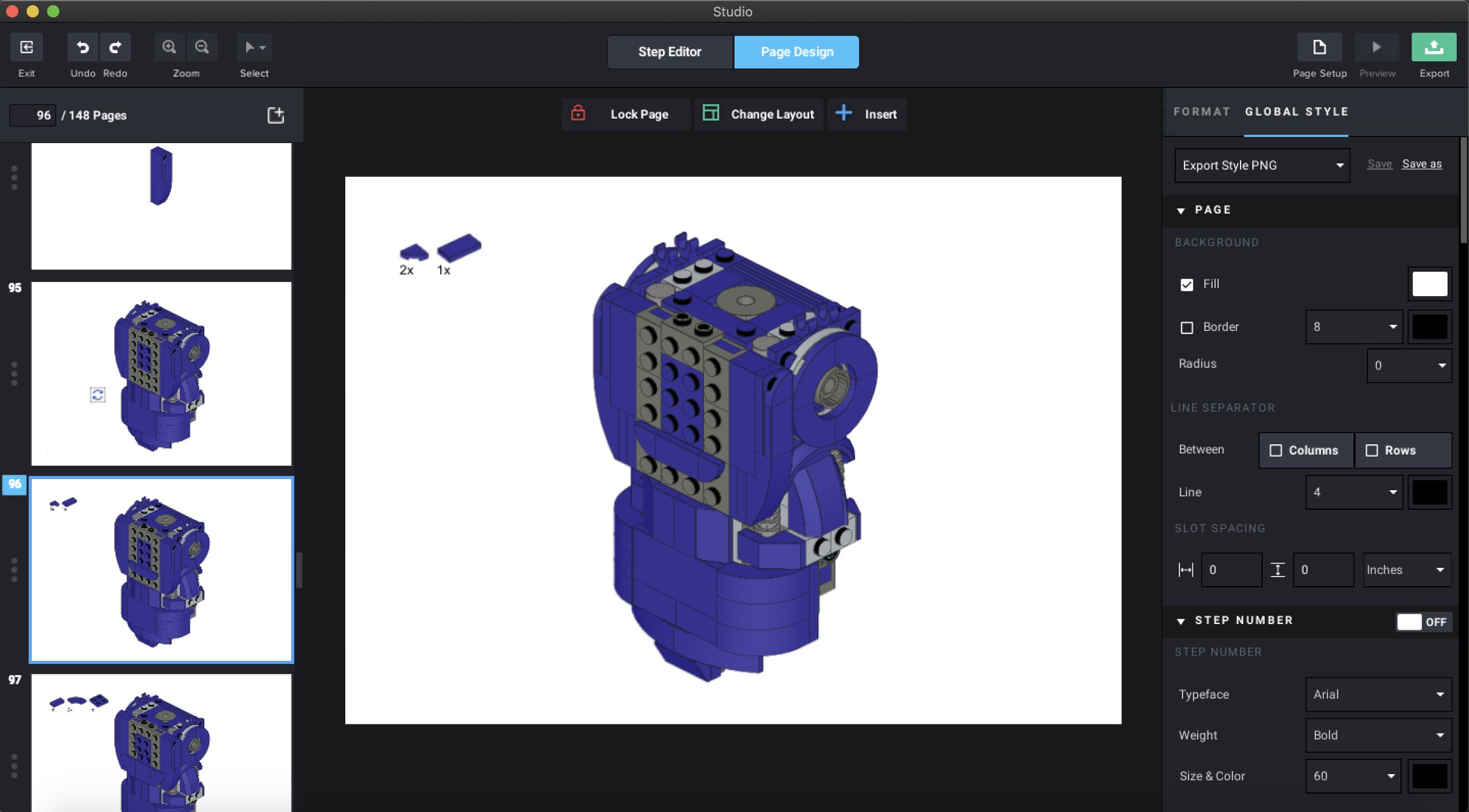
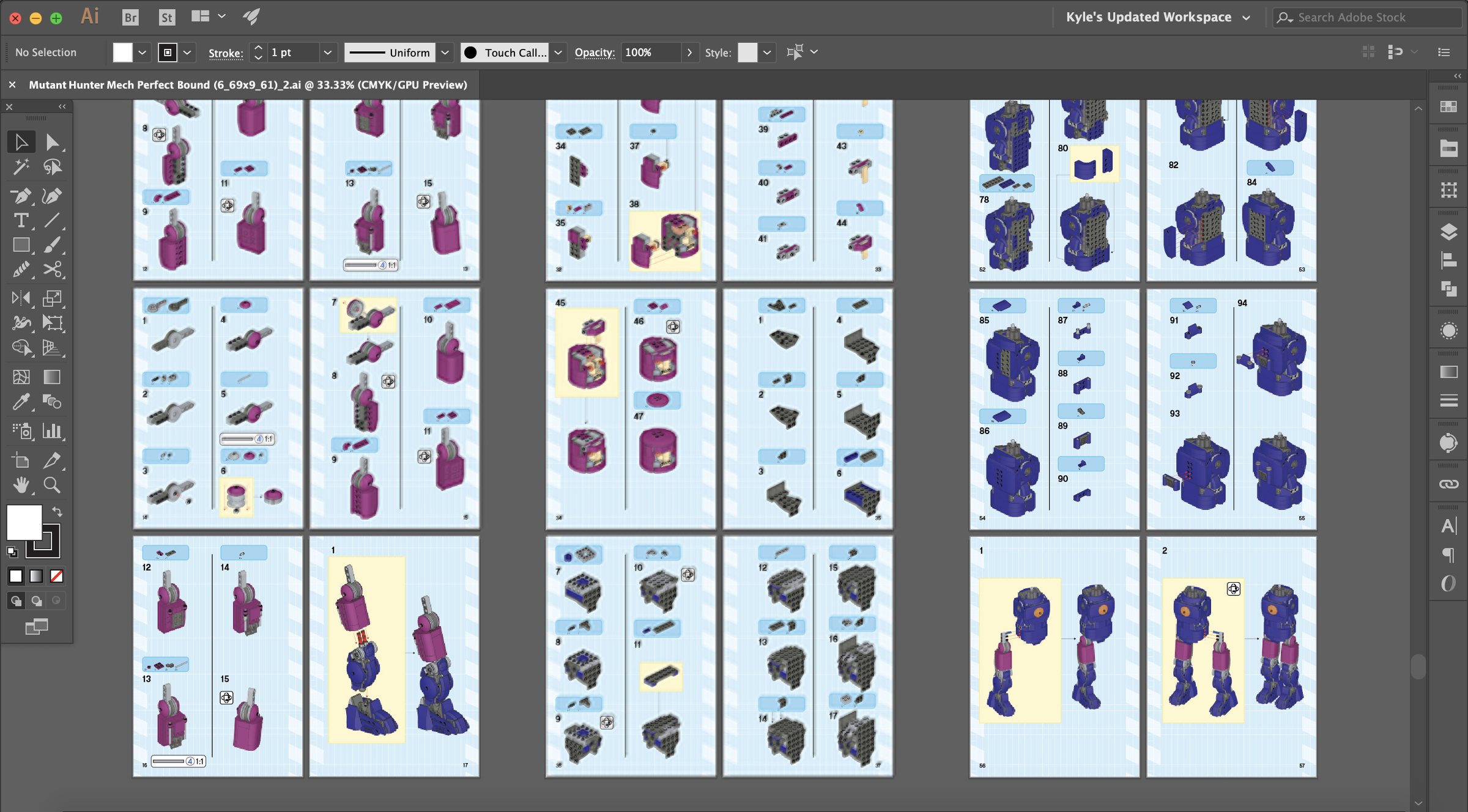
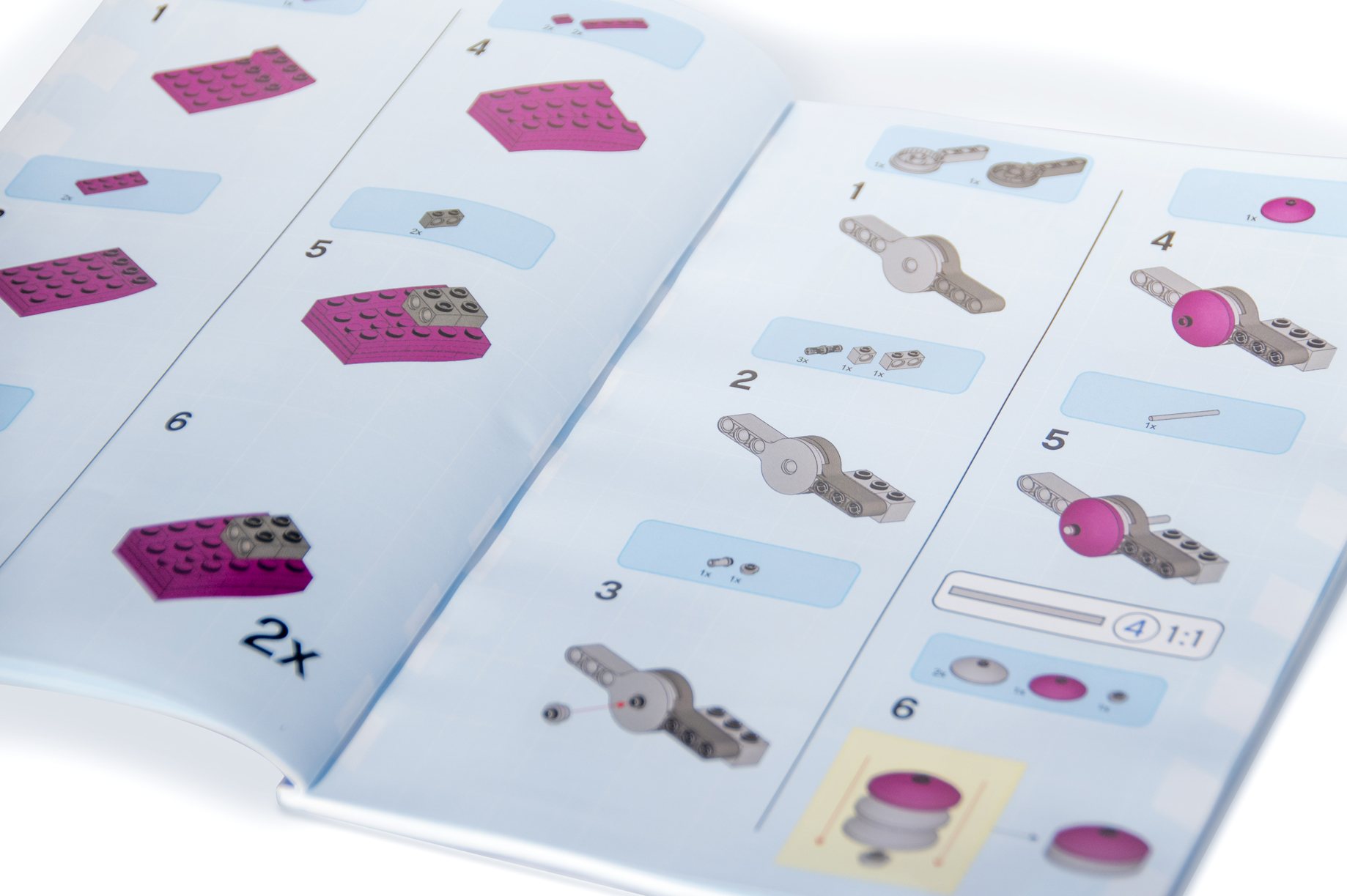
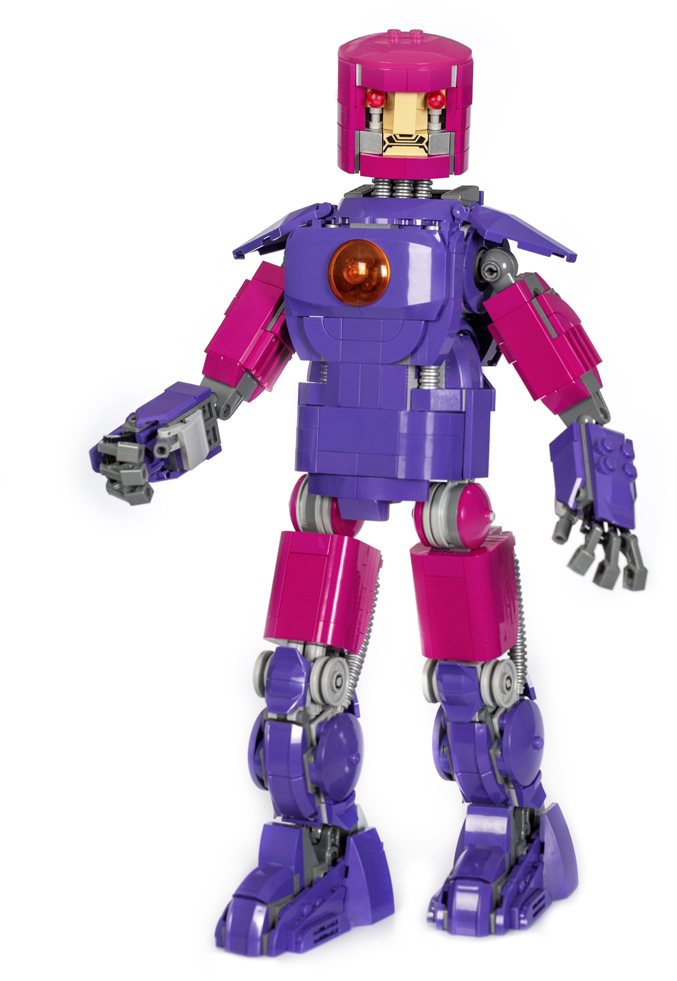
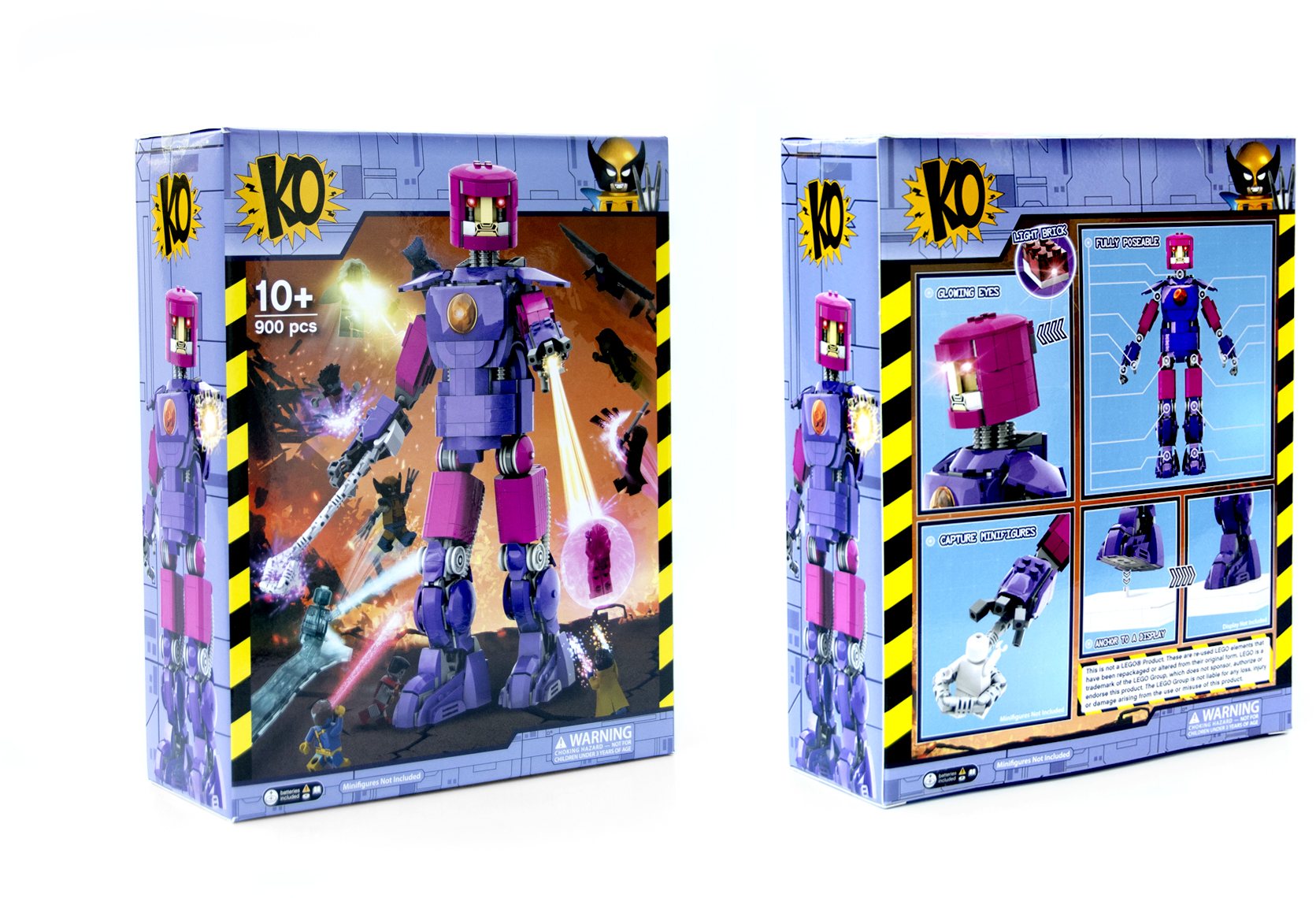
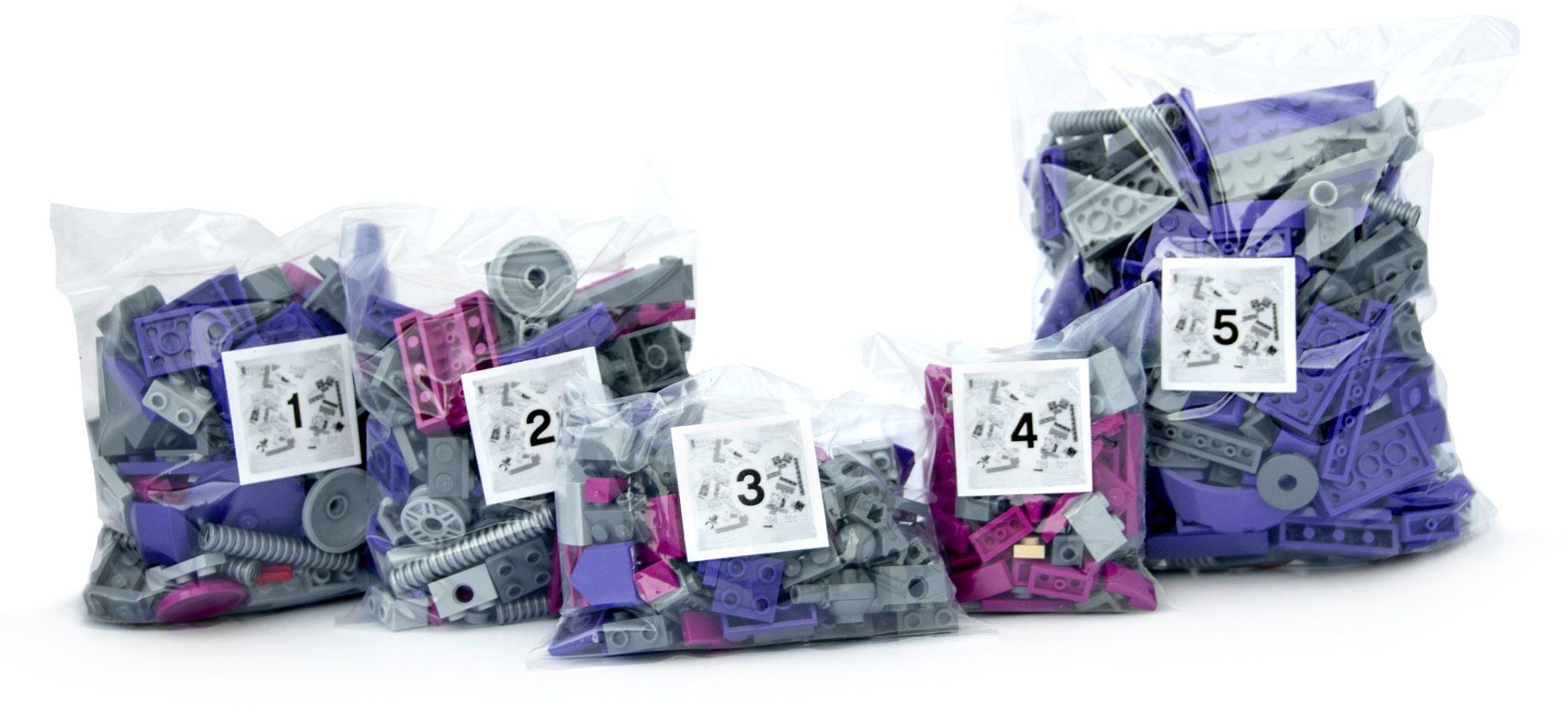
35 comments on this article
Fascinating read! The considerations could apply to IDEAS, too, minus box/bags, etc)
Lots of work involved, but a very interesting read. I think the cost of the set reflects the work involved and the limited run.
Will people buy it though at that price
This is a great article! Lots of useful information and great job by the way!
I would disagree about Bricklink Studio though.
Lego Digital Designer is much more user-friendly, and recently some clever Lego fans on Eurobricks found a way to create all the parts and prints that were previously missing from LDD so they are now available for download.
Studio is dark, confusing, time consuming and overall pretty overrated.
Finally someone who considers what makes a good set when designing a set, instead of just making a MOC like they normally would. Ideas is almost entirely MOCs. They often are impressive... but aren't remotely able to be made into a set without halvng the piece count and other major complications.
Fascinating article.
The amount of work necessary for such a small "production run" is breathtaking. Good luck for selling as many as possible.
The set looks cool, it just isn't my kind of thing I'm afraid.
Wow, you must be really chuffed! It looks great in all of the up-close photos, but there's just something about that first photo especially in thumbnail (the one with the box, instructions and bags included) which makes the model look a little puny around the shoulders/arms. It might be the white space there in contrast to the blocks of colour framing it either side, or it might be the pauldrons being positioned more upwards than in the other photos.
I love all the little internal details visible on the surface, and how solid the whole thing looks. I bet it holds up really well in typical action figure-type play.
Really interesting article!
EDIT - I would have to colour-swap the armour pieces for my own personal taste; I prefer my death machines a little less disco (sorry Galactus) ;D
I think you missed one very important step … IP approval? Mainly for the prints on the box.
@ComfySofa said:
"Wow, you must be really chuffed! It looks great in all of the up-close photos, but there's just something about that first photo especially in thumbnail (the one with the box, instructions and bags included) which makes the model look a little puny around the shoulders/arms. It might be the white space there in contrast to the blocks of colour framing it either side, or it might be the pauldrons being positioned more upwards than in the other photos.
I love all the little internal details visible on the surface, and how solid the whole thing looks. I bet it holds up really well in typical action figure-type play.
Really interesting article!
EDIT - I would have to colour-swap the armour pieces for my own personal taste; I prefer my death machines a little less disco (sorry Galactus) ;D"
The model created is a Sentinel, not Galactus. Though they both have the same color palette. Awesome design by the creator. I’m really Impressed how it turned out. I would love to be that talented to create something even half as awesome as this. Kudos!!
Interesting article. It sheds light on the expertise required and the challenges of creating sets. Without all this background, you might imagine that it was a lot easier than it is and therefore question whether the price was justified.
KO Custom Minifigs is a known entity among some AFOLs. But if I were an ordinary member of the public looking for a custom LEGO set, there’s no way I would order through KO’s site. While it looks great, there’s no named individual, no e-mail, no phone number and no physical address. If I saw that and didn’t know better, it would scream ‘scam!’ to me.
This looks great, but not for me.
@Brickchap said:
"This is a great article! Lots of useful information and great job by the way!
I would disagree about Bricklink Studio though.
Lego Digital Designer is much more user-friendly, and recently some clever Lego fans on Eurobricks found a way to create all the parts and prints that were previously missing from LDD so they are now available for download.
Studio is dark, confusing, time consuming and overall pretty overrated. "
Studio is more difficult to use but enables more complex models to be built- LDD only allows connections that are absolutely legal
Perfect idea for a set! If LEGO would ever release a sentinel of this scale and add some X-men minifigs like Wolverine and Cyclops i would never hesitate to buy it!
This article is great, however the design doesn't work 100% for me. There's something about that neck ... But overall well done no doubt!
If I may add: this kind of set is what MARVEL really should be! Instead of ...
I kinda want to use the base design of this to make other characters, a la Galactus, or even Giant Man.
@Sopor81 said:
"I think you missed one very important step … IP approval? Mainly for the prints on the box."
Correct. This is not a legally sellable set.
@Mr__Thrawn said:
" @Brickchap said:
"This is a great article! Lots of useful information and great job by the way!
I would disagree about Bricklink Studio though.
Lego Digital Designer is much more user-friendly, and recently some clever Lego fans on Eurobricks found a way to create all the parts and prints that were previously missing from LDD so they are now available for download.
Studio is dark, confusing, time consuming and overall pretty overrated. "
Studio is more difficult to use but enables more complex models to be built- LDD only allows connections that are absolutely legal"
Even less than that, actually. A LOT of connections that you would be able to use with real bricks no-problem and that LEGO uses in their own sets even just aren’t implemented. Specifically studs with bar holes in them not fitting into bars and nearly every brick with studs not connecting to technic holes (all while staying legal otherwise of course). Therefore I do prefer Studio, even though it does require some getting used to (especially after being an LDD ‘main’ beforehand). Still, things like Blender work just the same: extremely non-user friendly interface but amazing possibilities with nearly no limits.
I can't be the only one who looked at this article's picture at first and thought "Oh, no... Why is Brickset suddenly endorsing bootleg?"
IP lawyers could have a field day with this set. And, well, now that Disney owns Marvel, I bet their roster of lawyers is substantial.
@Zander said:
"KO Custom Minifigs is a known entity among some AFOLs. But if I were an ordinary member of the public looking for a custom LEGO set, there’s no way I would order through KO’s site. While it looks great, there’s no named individual, no e-mail, no phone number and no physical address. If I saw that and didn’t know better, it would scream ‘scam!’ to me."
You make a good point. In many European countries it's a legal requirement to include them on websites but presumably not in the USA.
@chief7575 said:
" @ComfySofa said:
"(sorry Galactus) ;D"
The model created is a Sentinel, not Galactus. Though they both have the same color palette. Awesome design by the creator. I’m really Impressed how it turned out. I would love to be that talented to create something even half as awesome as this. Kudos!!"
Aaah right! I'd assumed it was a no brand figure offering a route to an easy Galactus with only a couple of simple changes. I've had a search of Sentinels now (my comic knowledge doesn't extend far beyond mainstream movies and LEGO sets), and this MOC is really pretty close!
As others have said, the problem with this set is legal issues, i. e. the minifigs on the box. If I tried to import this set, the German customs would seize it immediately, "thanks" to very strict orders issued by the TLG legal department.
That's one of the reasons a lot of people over here have started to really hate TLG. They spend way more money on legal shenanigans than on fixing product quality issues.
@illennium said:
" @Sopor81 said:
"I think you missed one very important step … IP approval? Mainly for the prints on the box."
Correct. This is not a legally sellable set."
Surely this is okay because the Lego logo is not present? And the parts are just being used to create something new that does not look like anything else TLG is making.
I think it looks just like one of those mega bloks sets that always sit next to lego on the toy store shelves. And TLG don’t go after them with lawyers.
It’s like me building something with Lego, taking a photo of it turning it into an NFT and selling ten thousand of them. Because I’ve used the bricks as a medium to build something else. You can’t copyright a new creation, surely?
@meesajarjar72 said:
" @illennium said:
" @Sopor81 said:
"I think you missed one very important step … IP approval? Mainly for the prints on the box."
Correct. This is not a legally sellable set."
Surely this is okay because the Lego logo is not present? And the parts are just being used to create something new that does not look like anything else TLG is making.
I think it looks just like one of those mega bloks sets that always sit next to lego on the toy store shelves. And TLG don’t go after them with lawyers.
It’s like me building something with Lego, taking a photo of it turning it into an NFT and selling ten thousand of them. Because I’ve used the bricks as a medium to build something else. You can’t copyright a new creation, surely?
"
Not LEGO IP, Marvel. Did KO pay Disney for the commercial use of their characters likenesses? I doubt it.
@Zander said:
"Interesting article. It sheds light on the expertise required and the challenges of creating sets. Without all this background, you might imagine that it was a lot easier than it is and therefore question whether the price was justified.
KO Custom Minifigs is a known entity among some AFOLs. But if I were an ordinary member of the public looking for a custom LEGO set, there’s no way I would order through KO’s site. While it looks great, there’s no named individual, no e-mail, no phone number and no physical address. If I saw that and didn’t know better, it would scream ‘scam!’ "
The KO site is SSL certified and all transactions are conducted through PayPal. You can also use the “contact us” tab with questions. I’ve purchased through the site before and have never had any issues. It’s a reputable site and company
@meesajarjar72 said:
" @illennium said:
" @Sopor81 said:
"I think you missed one very important step … IP approval? Mainly for the prints on the box."
Correct. This is not a legally sellable set."
Surely this is okay because the Lego logo is not present? And the parts are just being used to create something new that does not look like anything else TLG is making.
I think it looks just like one of those mega bloks sets that always sit next to lego on the toy store shelves. And TLG don’t go after them with lawyers.
It’s like me building something with Lego, taking a photo of it turning it into an NFT and selling ten thousand of them. Because I’ve used the bricks as a medium to build something else. You can’t copyright a new creation, surely?
"
The issue is, for starters, the image of Wolverine at the top of the box.
@Wolverine123 said:
" @Zander said:
"Interesting article. It sheds light on the expertise required and the challenges of creating sets. Without all this background, you might imagine that it was a lot easier than it is and therefore question whether the price was justified.
KO Custom Minifigs is a known entity among some AFOLs. But if I were an ordinary member of the public looking for a custom LEGO set, there’s no way I would order through KO’s site. While it looks great, there’s no named individual, no e-mail, no phone number and no physical address. If I saw that and didn’t know better, it would scream ‘scam!’ "
The KO site is SSL certified and all transactions are conducted through PayPal. You can also use the “contact us” tab with questions. I’ve purchased through the site before and have never had any issues. It’s a reputable site and company "
I don’t doubt KO’s integrity for a second. But if I were a member of the public or an AFOL who was unaware of the secondary market rather than an AFOL in the know, I would have serious reservations about ordering through KO’s site. Anonymity and lack of contact details don’t inspire trust. As @Huw points out, making yourself known to prospective buyers is a legal requirement in some countries - with good reason.
I don't dispute its reputability, either, otherwise I would not have published the article. But the lack of contact details does not instil confidence if I didn't know better.
I would never buy it, not because it is pricey, or possible legal restructions but simply because it is an ugly build :)
Proportions are way off, the head is too big, shoulders don't match, the torso is too fat, upper legs are too blocky,..etc,...
Head doesn't seem right.
Too big, awkward looking compared to body, which is nice. The arms and legs look good, sturdy too.
Head's too much like a trash can. Top head needs to be built up, and over all smaller head like by one stud.
@Zander said:
" @Wolverine123 said:
" @Zander said:
"Interesting article. It sheds light on the expertise required and the challenges of creating sets. Without all this background, you might imagine that it was a lot easier than it is and therefore question whether the price was justified.
KO Custom Minifigs is a known entity among some AFOLs. But if I were an ordinary member of the public looking for a custom LEGO set, there’s no way I would order through KO’s site. While it looks great, there’s no named individual, no e-mail, no phone number and no physical address. If I saw that and didn’t know better, it would scream ‘scam!’ "
The KO site is SSL certified and all transactions are conducted through PayPal. You can also use the “contact us” tab with questions. I’ve purchased through the site before and have never had any issues. It’s a reputable site and company "
I don’t doubt KO’s integrity for a second. But if I were a member of the public or an AFOL who was unaware of the secondary market rather than an AFOL in the know, I would have serious reservations about ordering through KO’s site. Anonymity and lack of contact details don’t inspire trust. As @Huw points out, making yourself known to prospective buyers is a legal requirement in some countries - with good reason.
"
We would like to address the comments regarding the notion that to those unfamiliar with our brand our website might appear to be a "scam."
We want to offer a pleasant online shopping experience to anyone that visits our website and provide our customers with the utmost confidence when purchasing from us. We have added more information into the About section of our website. We have always used secure web hosting via SSL encryption, and every transaction has always, and continues to be conducted through a PayPal checkout system for added buyer protection through PayPal. In the event that there are any issues involving an order, we will always do everything in our power to resolve it. We hope that this clears up any potential misconceptions about our company and our commitment to excellence all around.
I used to design custom sets on LDD all the time, and every once in a blue moon I still will. Not to pat myself on the back but they’re not like traditional MOCs in some ways— I’ll try to incorporate play features and limit myself to a size and price point that LEGO realistically would do. I never make sets off of existing IPs so I doubt anyone would be interested but I’d say I have a bit of experience in this field. Mostly with locations— vehicles and large characters like that Sentinel aren’t my speciality.
There's a lot of very useful information here for designers--I especially appreciate the section on producing useable instructions! Having a good "About" section on any commercial website is very important, not necessarily for the most obvious reasons. For example, I am very frustrated by any seller of gardening plants that doesn't tell me a physical location, because I need to know whether the seller's climate is a good match for mine. Surprisingly, I've seen many otherwise tempting catalogs (not just web commerce sites) which don't give this critical information.
This article also gives some insight into what, besides the basic cost of plastic, drives the cost of any full Lego set, whether from TLG, through Bricklink/Ideas, or pure MOC. Most people complaining about prices don't have a clue about how much time it takes to do all these steps, or how expensive hiring someone to do them might be!
Thank you again!
There was some talk further up about using LDD…I thought that program didn’t get support anymore?
@blogzilly said:
"There was some talk further up about using LDD…I thought that program didn’t get support anymore?"
It doesn't get new updates from LEGO, but there is a small army of builders that put out community patches distributed on Eurobricks. Personally I have appreciated the library of built sets hosted on one of the forum pages.
@Galaxy12_Import said:
" @blogzilly said:
"There was some talk further up about using LDD…I thought that program didn’t get support anymore?"
It doesn't get new updates from LEGO, but there is a small army of builders that put out community patches distributed on Eurobricks. Personally I have appreciated the library of built sets hosted on one of the forum pages."
You can also import any LDD file into Stud.io (but due to the age of some of the files, some pieces are not available), which is a great starting point if you want to see how something is built or try colour swaps etc.